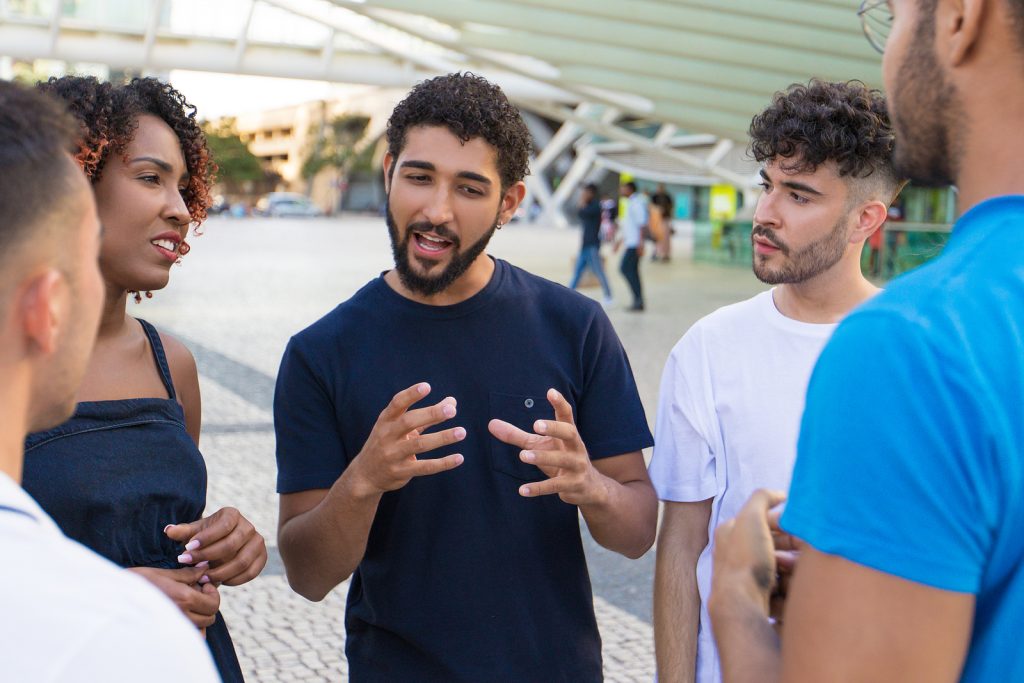A narrative is a series of events that can be described through words, images, performance, or a combination of these forms. Often, the manner in which the story is told can impact how it is told and how it is received. Stories can convey complex concepts and perspectives, invoke strong emotions, and leave a lasting impression on our minds. This is why using narrative to facilitate learning can be so powerful.
“Everyone tells a story about themselves inside their head. Always. All the time. That story makes you what you are. We build ourselves out of that story.”
– Patrick Rothfuss
According to education researchers Szurmak & Thura at the University of Toronto, narrative is such a great teaching tool because it reinforces the brain’s need to seek out patterns, balance, and structure, while simultaneously stimulating emotion and curiosity – all factors that support metacognitive learning.
Interactions with narrative can also be equitable. They can encourage strong peer connections, self-analysis, contextualization, and self-reflection. So how can we use the power of narrative when it comes to language learning? Are there particularly beneficial and effective methods that can be adopted into the ESL classroom? Absolutely!
Here are some of the ways I use narrative to engage my students:
- Analyzing – Talk about key concepts presented in the text and discuss their meaning and relevance
- Reordering – Ask students to reorder or shuffle the events in a narrative to change the outcome or meaning of the story, or to represent how they think the story most likely unravelled
- Interacting – Use interactive storytelling to liven-up a class by assigning dialogue and characters based on a story for the purpose of role play
- Problem-solving – Ask students to use their critical-thinking skills to solve problems presented in the story
- Vocabulary-building – Have students practice communicating with each other using vocabulary sets from the story
- Story Sharing – Ask students to tell stories about themselves and their experiences relevant to the lesson topic. Teachers can share their own stories to give real-world context to concepts being taught
- Predicting – Use a story about an event, such as a news article, and challenge the students to make predictions about what will happen next based on their knowledge of the subject
- Reflecting – Ask students to reflect on how they would react if the story was about them. What would they do differently? Do they agree with the character’s opinions and decisions? Why or why not?
In the book The Storytelling Animal, Gottschall views story as the most effective medium for facilitating learning, and suggests that learning and story are actually bound together in a way that cannot be severed. This point is illustrated in the Storylearning Method of language acquisition, which advocates that story-based activities reinforce our natural pathways to learning a new language by connecting everything students have learned more deeply and more meaningfully.
The concept is simple: narrative inspires fluency by helping students make connections between the story and their own awareness of the world, and in the process they become highly engaged while gaining a sense of equity that can be deeply meaningful. For instance, connecting to the narrative of a well-known event, such as an important news story making headlines, can spark immediate interest and get your students engaged. Why? Because they are familiar with it, they likely have opinions about it, and it may have relevancy to their own lives.
In addition, according to educational strategist Dr. Jeff Rhodes, getting students talking about themselves and relating their own perspectives and knowledge is key to student engagement and equity during learning. This is because we all have an intrinsic need to share who we are, and to be recognized and valued for our individuality. This brings to mind a quote I really like:
“Everyone tells a story about themselves inside their own head. Always. All the time. That story makes you what you are. We build ourselves out of that story.” – Patrick Rothfuss
There are so many ways in which narrative can be used to engage our students. But ultimately, if we can get students talking about themselves, sharing their own stories and relating their own experiences in class, that’s when learning becomes most meaningful.
For more information on storytelling in the ESL classroom, read our previous post, Let me Tell you a Story.

